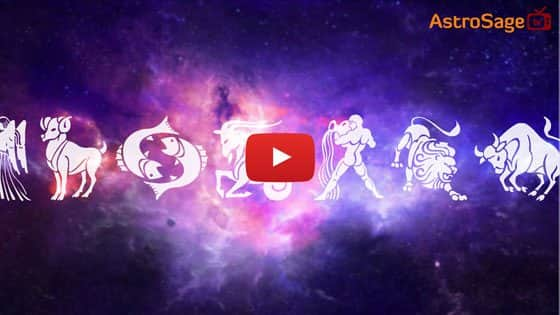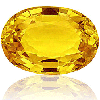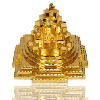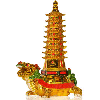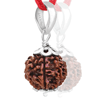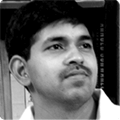Yoga & Art of Relaxation
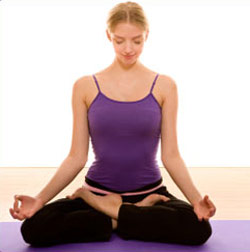
Nothing, perhaps, has been so grossly misunderstood as the art of relaxation. For one thing, relaxation should not be mistaken for inertia; for another, it also does not mean lying in a lazy manner or doing nothing. Relaxation really means rest after effort, more truly, conscious rest after conscious effort. It, therefore, follows that the more perfect the effort, the more perfect is the relaxation.
The so called "decomposing" or relaxation exercises suggested by certain French and American advocates of physical culture are, in fact, artistic statue posing more in the sense of repose than relaxation. Stebbins observes that "relaxation "would mean a complete resignation of the body to the laws of gravity, the mind to nature, and the entire energy transferred to a deep dynamic breathing. The complete relaxation of the voluntary muscles at once transfers the energy to the involuntary parts, so that strictly speaking there can be no such thing as relaxation, except in the voluntary muscles and brain. But this is quite sufficient. This transfer of energy by voluntary action and involuntary reaction produces the necessary equilibrium for the renewal of strength.
Engel quotes from a very old German book a certain important method of relaxation in which the pupil is taught to lie upon the floor and to withdraw all voluntary nerve force from the extremities and thinking part of the brain, and thus to simulate death. This exercise is very strongly recommended as the beginning of all control of the body and is very ably illustrated by a picture of a man lying limp and helpless.
It may be interesting here to observe with reference to the practice of relaxation that it is a common custom among the nomadic Arabs and the caravan merchants journeying between Sikkim, Berber and Kharatum immediately they reach an oasis or any other camping place to at once throw themselves in the shade upon the ground and thento relax completely and voluntarily. Generally, they remain in this position from fifteen minutes to an hour, or sometimes even more, according to the state of their exhaustion. In certain parts of Kashmir and this the author has personally observed it is customary for the labourers, who carry heavy loads on their back through great distances and heights, to stop on their way near astream and lie down in a semi lifeless state for some time whenever they feel physically exhausted. These mountaineers, the wanderers of the desert, the gypsies and other tribes are able to undertake, when occasion requires, surprizingly long journeys with very little rest owing to the knowledge of the art of relaxation which consists in resting at will.
The ancient yogins, who are known for their self mastery over the entire voluntary and involuntary organism, were fully alive to the many advantages of relaxation. According to them, relaxation gives the maximum amount of renewed strength in the minimum amount of time. Even more than sleep, successful relaxation is the vital principle of rest which quickly recuperates or regalvanizes, as it were, the nerve centres, collects the scattered forces and thus reinvigorates the whole body. It is just as refreshing as a Turkish or a Russian bath, besides having many of the peculiar therapeutic advantages of a medical massage.
POSTURES FOR RELAXATION
Whenever physical or mental fatigue or strain is experienced, or the mind is agitated, the practice of certain postures which contribute greatly to muscle relaxation is recommended by the yogaauthorities.182 They are: (a) dradhasana (b)savasana, and (c) makarasana.
(a) Dradhasana : Dradhasana or the firm pose is regarded as the best position for sleeping in which one finds oneself most comfortable. As in Fig.11, it is practised by lying on the right side of the body in a state of relaxation with the right arm under the head, as if, for a pillow. It has been demonstrated that lying upon the right side favours emptying of the stomach during rest when the peristaltic movements reach their minimum, besides ease in breathing movements (Kellogg). The yogins contend that by sleeping in this manner, dreams and nocturnal emissions are generally not experienced during sleep, digestion is improved, and one feels the rest of a prolonged sleep even during a short period.
(b) Savasana : Savasana or the corpse pose is also differently termed martasana or the dead pose. According to Goraksa and other authorities, this posture destroys fatigue and quiets the agitation of the mind. The technique consists in simply lying supine with the face towards the sky and the arms at sides with the legs passively extended to their full length. With that palsied sinking feeling as it is experienced during an early stage of collapse or the basal anaesthesia, keep motionless like a corpse and relax gradually every muscle of the body. This can be done in two ways: (i) either by partial, or (ii) by general relaxation, as convenient. Then, stay put, close the eyes as in peaceful slumber, and let normal breathing take its course.
- In the case of partial relaxation, conscious attention is withdrawn by stages from the sixteen vital zones of the body, by paying attention to each part separately. For the purposes of relaxation, movements of bionergy, and concentration, these parts are termed marmasthanani or the sensitivezones. In partial relaxation, the attention really, the nervous stimuli is withdrawn gradually by absolute resignation of will and complete detachment from all conscious activities, in the following sequence : first the tips of the toes ; then slowly moving upwards, the ankles ; the knees ; the thighs(simultaneously with this, the arms) ; the anus ;the generative organs ; the navel ; the stomach ;the heart ; the neck ; the lips ; the tip of the nose; the eyes ; the space between the eyebrows ; the forehead ; and, finally, the brain or brahmapura.
- In the case of general relaxation, both muscular and nervous, through concentration on the incoming and outgoing breath, however, the supply of nervous stimuli is switched off from all parts of the body simultaneously and at once instead of by stages. Keep watching the movements of the breath until at last the mind synchronises with the hazy sense of your being. What is important is that the consciousness of physical body should be necessarily and entirely forgotten. When successfully coordinated with deep diaphragmatic breathing in the early stages, it enhances the sedative effects of relaxation on the nervous and, therefore, also on the muscular system. Maintain this poseas long as it is found convenient, but not less than five minutes.
Among the various physiologic benefits derived through this reposing exercise may be mentioned the improvement in the action of the heart and of the nervous and muscular systems. Successful relaxation causes a rapid fall in the blood pressure and the pulse rate. It also establishes evenness of the respiratory activities and reduces strain on the heart. If maintained for more than ten minutes, relaxation tends to much deepened respiration, and the lowered circulation in the brain consequently increases tendency to sleep. This has been proved by the experimental data obtained during relaxation in the case of savasana following pascimottanasana at the end of fifteen minutes.
(c) Makarasana : Makarasana or the crocodile pose consists in lying prostrate with the chest, the abdomen and the front of the body in close contact with the floor the legs at full length and apart, the arms folded and the head resting thereon.
EXERCISING THE VERTEBRAL COLUMN
Degeneration of the nerve tissues leads to many functional disturbances and impairment of the entire nervous system when neglected; and this degeneration is usually the result of improper circulation of the spinal cord. "The circulation of the spinal cord," says Goldthwait, "is dependent very largely upon the tone of the muscles of the spine, and it is at once obvious that if the muscles of the spine are weak the circulation in the spinal cord must also be weak.
The practical yogins fully realized that, apart from certain indirect muscular effect, the spinal cord never receives thorough exercise during ordinary physical movements. Special measures have, therefore, been adopted by them for exercising the vertebral column. In this instance, they specially favour the stretching and twisting exercises for the spine. Of the many such postures, it is possible, at this stage, to discuss only the two important ones, viz., (a) pascimottanasana and {b) matsyendrasna.
(a) Pascimottanasana : Because this posture stretches out (uttana) more particularly the posterior (pascima) muscles of practically the whole body, it is termed pascimottanasana or the posterior stretching pose. It is also termed Passcimotanasana from the word tan and is practised thus:
Whilst sitting on the floor, stretch out your legs together. Keep them fixed to the ground, stiff like a stick, without of course, in so far as is possible lifting or bending the knees. Now slowly incline the body above the waist forward, and gradually bend it down so as to reach out for the toes with the respective hands and fingers ; then hold them tightly. Should this be comfortable, bend the head still further till the forehead finally touches the knees. This position may be secured with ease if the muscles of the waistline are relaxed and followed by a moderate pull on the toes with the fingers. Rest your face there on the hollow between the knees, and maintain this position so long as it is comfortable.
Except in very rare cases, the first attempts at this posture are likely to be unsuccessful mostly due to inelastic posterior muscles of an average person this is more so in the case of those above thirty years. But failure to complete this exercise, as per illustration, need not discourage the progressing student for the adjustments; however, will take care of them gradually by working at it every day. If an exhalation is synchronized with the movements while bending the head down ward, it considerably aids the process of thorough and easy stretching of the posterior muscles. What may be positively avoided are the jerks and hasty or strenuous pulls which may cause muscle soreness or impair even its full elasticity through injuries known as charleyhorse.
It is quite evident from the illustration that this pose stretches the spine to its maximum length at an average of about 20 per cent extra over the normal length of the spine in sitting, the measurement being taken from the tip of the coccyx to the bottom of the occiput. This is made possible by a mechanical contour of the spine resembling a semi circular arch the only position favourable to maximum stretching contributing to greater elasticity of connecting muscles of the spine than is otherwise possible. By bringing these muscles into activity, it thus raises their tone and pliability.
Through synergic muscular influence, the spinal cord is activated and the circulation effecting the nerves considerably improved. Also, due to the posteriorly stretched and enlarged lumbosacral vertebra foramina, the spinal nerves arising from this region shew marked improvement in their tonicity and functions affecting the internal organs. Our scientific study of this pose reveals many startling {acts regarding its application as a therapeutic measure which have only recently been corroborated by the experiments of Hanflig of Boston who advocates safe, mechanical self suspension for stretching and, thus, enlarging the vertebral foramina.
Among the hygienic benefits of this posture maybe mentioned the favourable compression of the abdominal viscera, the loosening of the hamstring muscles, Hexing of the glutei, psoas major and mm or muscles, besides complete stretching, to a more or less extent, of all the posterior muscles of the body. Although this posture appears simple, it is capable of producing reactions worthy of scientific study.
Recent pseudoscientific attempts by the so called students of Yoga, like Kuvalayananda and others, culminating into an array of imposing tables of blood pressure changes during the practice of various asanas are not only worthless but even misleading. For example, blood pressure changes occur even while you sit down, stand up or lie down; and this may naturally happen during yogasana as it is likely to happen with any physical exercise. What is really important to man and science is the correlated interaction on the other equally important functions such as respiration, pulse and pulse rate etc. Reference should, therefore, be made to only such data as are obtained during the scientific study of yoga asanas, and have them charted as graphs, after taking out the average. It will be noted how the reactions on the internal organs differ widely in the case of man, woman, and child of about eight years. Only when such charts are studied with regard to the various asanas and their implications, is it possible to judge the indications and contraindications of specific asanas in their application to the needs of an individual. The posture dosage can then be regulated or prescribed with scientific precision to meet specific requirements of both the students and patients.
(b) Matsyendrasana : The twisting of the spine is accomplished alternately on both the right and left sides by bringing into play the corresponding right and the left legs through matsyendrasana, a posture so termed after the name of the great practical yogin Matsyendra. The special technique, as illustrated in Fig. 13, involves much difficulty. In the beginning, therefore, it should be tried only in its primary stage known as ardha mats yendrasana. It is practised in two ways as follows.
- Sitting on the floor, press the right heel against the navel while the leg is folded and the thigh is rested on the ground. As far as possible, do not allow the knee to rise above the ground. Now pull the left leg and press the left ankle against the right knee, heel touching the ground. Interlock by levering the left knee with the right arm and catch hold of the left toes with the fingers of the right hand. Balance the body with (the aid of the left hand. Maintain the pose as long as it is comfortable.
- Alternately, press the left heel against the perineum and keep the left leg rested on the floor, with the left thigh flat on the ground. Now pull the right leg and interlock it against the opposite knee. Place the right knee under the left arm pit, twist the whole trunk laterally towards the right, and catch hold of the toes of the right foot with the fingers of the left hand. With an effort of extreme twist, touch the edge of the left thigh with the right hand, swinging the arm from behind the back and then pressing near the groin. Keep the neck straight but slightly turned towards the right shoulder. This partial mastyendrasana is not so difficult as it appears in Fig. 14, and a few attempts are likely to end in complete success. Repeat both the above variants alternately, using the right leg with the twist on the left and vice versa.
The physiologic benefits of this posture are very obvious. It is designed to complement
the effects of the previous pose through the extreme lateral twists of the spine.
It is recognized that such movements of the spine possess great mechanical advantages,
viz., the removal of the lateral curvature of the spine, the correction of kyphosis
and other deformities, the improvement in the replacement of internal organs incidental
to ptosis and similar other defects. When associated with forced and complete expiration,
the very deep pressure heightened by muscular contraction of the abdomen accelerates
venous circulation in the abdominal and pelvic zones. Further, the alternate and
reverse stretching tends to massage and exercise all the important deep and superficial
muscles of the spine, and thus increases the spinal and circulatory activities.
When done with ease and relaxation, it loosens up the articulations of the spine,
adjusts any sub luxations of the vertebrae and thereby relieves the spinal nerves
from the pressure consequent upon faulty habits of carriage and daily occupation.
Astrological services for accurate answers and better feature
Astrological remedies to get rid of your problems

AstroSage on MobileAll Mobile Apps
AstroSage TVSubscribe
- Horoscope 2025
- Rashifal 2025
- Calendar 2025
- Chinese Horoscope 2025
- Saturn Transit 2025
- Jupiter Transit 2025
- Rahu Transit 2025
- Ketu Transit 2025
- Ascendant Horoscope 2025
- Lal Kitab 2025
- Shubh Muhurat 2025
- Hindu Holidays 2025
- Public Holidays 2025
- ராசி பலன் 2025
- రాశిఫలాలు 2025
- ರಾಶಿಭವಿಷ್ಯ 2025
- ਰਾਸ਼ੀਫਲ 2025
- ରାଶିଫଳ 2025
- രാശിഫലം 2025
- રાશિફળ 2025
- రాశిఫలాలు 2025
- রাশিফল 2025 (Rashifol 2025)
- Astrology 2025

























